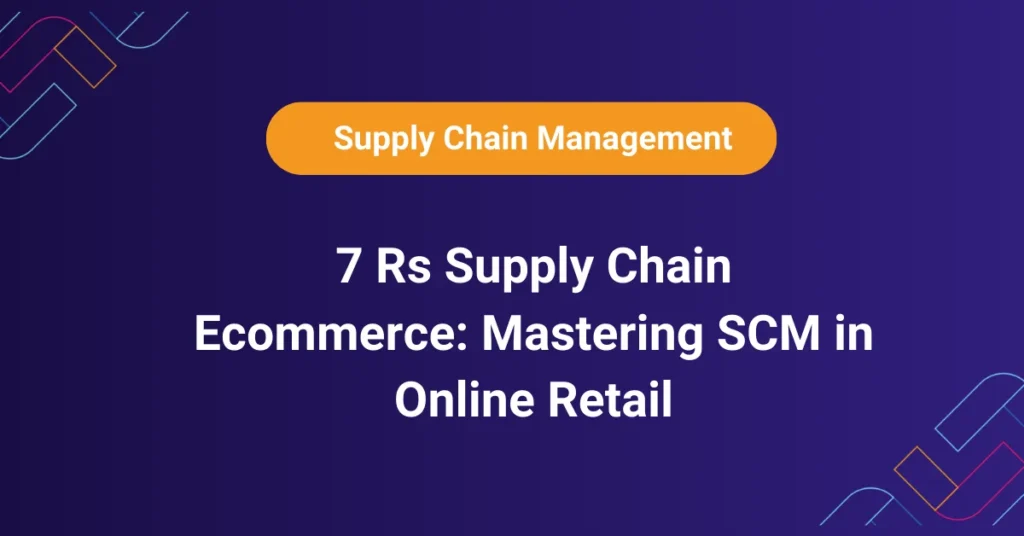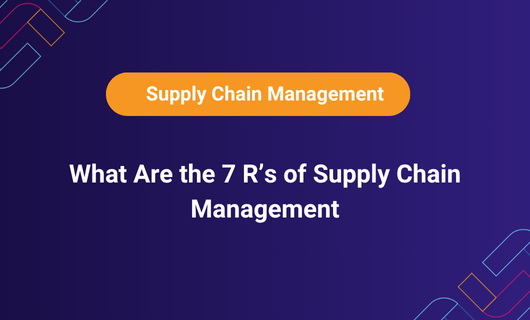Your returns pipeline is leaking revenue. Labor costs for processing are soaring, once-profitable inventory is now gathering dust in a “returns graveyard,” and you’re terrified that tightening your policy will crater your hard-won customer trust. What does your current ecommerce returns process truly cost you in lost margin, storage fees, and missed recovery opportunities? What would it look like to transform this cost center into a competitive advantage that actually strengthens customer loyalty? Just as you focus on how to streamline your global product sourcing for efficiency, implementing best practices in returns management is the only way to stop the bleeding and start recovering value.
The Strategic Pillars of a Modern Returns Operation
A best-in-class returns strategy isn’t about building walls; it’s about building intelligent workflows. It balances customer empathy with operational rigor, ensuring every returned item is handled in the most cost-effective and value-preserving way possible. Just as ecommerce inventory forecasting aligns stock levels with demand, this approach requires moving from a reactive, cost-centric view to a proactive, margin-recovery mindset.

Why the Traditional Returns Model Is a Margin Killer
Most brands treat returns as a unified, negative event. This outdated view ignores critical variables that determine an item’s fate and its impact on your bottom line. The real costs are often hidden:
-
Labor & Processing: The manual effort of receiving, inspecting, and deciding what to do next.
-
Loss of Value: A brand-new item loses a significant percentage of its value the moment it’s returned.
-
Storage & Shrinkage: Holding onto unprocessed returns consumes valuable warehouse space and increases the risk of damage or misplacement.
-
Opportunity Cost: Capital is tied up in inventory that isn’t for sale.
Which metrics track returns performance?
Track these key metrics: Return Rate %, Return-to-Process Cost, Return-to-Restock Cycle Time, Recovery Rate (% of value recaptured), and Customer Satisfaction (CSAT) on returns.
Architecting a Returns Policy That Builds Trust, Not Barriers
Your policy is your first line of defense. It should be clear, communicative, and designed to set accurate expectations to reduce “buyer’s remorse” returns.
-
Be Transparent: State your policy clearly on product pages, in the cart, and post-purchase. Ambiguity creates support tickets and distrust.
-
Fair Return Windows: 30 days is often the sweet spot. Longer windows can increase conversion but also increase returns. Test what works for your category.
-
Restocking Fees (The Strategic Nuclear Option): Use these sparingly and only for high-value, custom, or easily resold items. They protect you but can be a major CX deterrent.
What is a fair return window?
For most non-apparel e-commerce goods, a 30-day window is the industry standard and considered fair by consumers. For perishables or custom goods, a shorter window (e.g., 7-14 days) must be clearly communicated.
The Returns Portal: Your Digital First Impression
The returns experience begins the moment a customer decides to send an item back. A clunky, frustrating portal creates more work for your support team and sours the customer relationship.
-
Self-Service is Non-Negotiable: Allow customers to initiate a return, select a reason, and print a label without calling or emailing.
-
Integrate with Your OMS: The portal should pull order history automatically and connect to your Order Management System to validate the return.
-
Offer Choices: Where possible, offer instant exchanges, store credit, or refunds. Guiding the customer towards an exchange or credit is a powerful margin preservation tool.
What should a returns portal include?
A best-in-class portal includes: easy login/order lookup, a clear list of eligible items, a dropdown of return reasons, a choice of refund method (exchange/credit/refund), and automated shipping label generation.
The Engine Room: Optimizing the RMA and Grading Workflow
This is where operational excellence separates the winners from the losers. The Returns Merchandise Authorization (RMA) process must be a streamlined, data-rich assembly line, seamlessly integrated with multi-warehouse synchronization to ensure accurate tracking and efficient routing.
PAA: How are RMAs processed in a WMS?
Answer: In a modern Warehouse Management System (WMS), an RMA is a unique identifier that triggers a specific receiving workflow. When a returned parcel is scanned, the system flags it for inspection (grading) at a quality control station instead of directly putting it away, ensuring proper disposition.
-
Step 1: Intelligent Receiving: As returns arrive at your warehouse or 3PL, they should be scanned against the RMA. This updates the customer and your system instantly.
-
Step 2: Systematic Grading: This is the most critical step. Every item must be inspected and assigned a grade that determines its next life. This cannot be left to ad-hoc employee judgment.
A Standardized Grading Table:
| Grade | Condition | Action | Destination |
|---|---|---|---|
| A (Like New) | Unopened, original packaging. | Restock immediately. | Primary Sellable Inventory |
| B (Gently Used) | Opened but unused/unworn. Minor packaging damage. | Light refurb, repackage, test. | Secondary Market / Open-Box Sale |
| C (Used/Defective) | Signs of use, wear, or is defective. | Assess for repair cost vs. value. | Refurbish & Resell or Part Out |
| D (Destroy) | Damaged, unsanitary, or hazardous. | Document and dispose/recycle. | N/A |
How should we restock returned items?
Only Grade A (“Like New”) items should be returned to your primary sellable inventory immediately. All other graded items should follow a separate, defined workflow for refurbishment, liquidation, or recycling to protect the integrity of your main stock.
The Power of Disposition Logic: Refurbish, Resell, Recycle
The grading decision automatically triggers a disposition path. Automating this logic within your WMS/OMS is how you achieve scale and speed.
-
Refurbish: For electronics, appliances, or high-value goods, a dedicated refurbishment line can recover significant value. Calculate the Cost of Goods Sold (COGS) plus refurb cost; if it’s less than the item’s recoverable value, it’s worth it.
-
Resell (Liquidation): For Grade B and C items that are not cost-effective to refurbish in-house, partner with a B2B liquidation marketplace (e.g., B-Stock, Via Trading). In scm logistics, this approach converts stagnant inventory into immediate cash.
-
Recycle/Destroy: For Grade D items, have a responsible and documented process for disposal. This is a cost, but it’s necessary for brand safety and compliance.
When is refurbishing worth it?
Refurbishing is financially worthwhile when the total cost (labor + parts) is less than the potential resale value of the item. This is typically viable for higher-margin products like electronics, tools, or branded apparel.
Closing the Loop: Using Returns Data to Prevent Future Returns
Returns are a goldmine of product and customer data. Analyzing this data is your ultimate weapon in reducing return rates and improving forecasting.
-
Identify Faulty Products: If a specific SKU has a 50% return rate and the reason is consistently “defective,” you have a supplier quality issue, not a returns issue.
-
Improve Product Listings: A high rate of returns for “not as described” or “doesn’t fit” indicates your product photos, descriptions, or size charts are inadequate.
-
Inform Merchandising & Forecasting: Returns data directly impacts inventory planning. If 20% of a SKU’s sales are typically returned, your net demand is only 80% of gross sales. Planning for this prevents overstocking.
How do returns data improve forecasting?
By analyzing historical return rates by SKU, you can forecast net demand more accurately. If you sell 100 units but know 20 will be returned, your true sales are 80 units. This prevents over-ordering and stockouts of replacement items.
Proactively Preventing Avoidable Returns
The cheapest return is the one that never happens.
-
Enhanced Content: Use video, 360-degree photos, detailed size guides, and customer reviews to set accurate expectations.
-
Kitting & Bundling: For items frequently returned as “missing part,” consider pre-assembling or kitting them in the warehouse.
-
Virtual Try-On/AI: For apparel, jewelry, and home goods, AR/VR tools can significantly reduce fit and size-related returns.
How can I reduce return rates?
Reduce return rates by improving product content (better images, videos, size charts), analyzing return reason codes to fix product issues, offering live chat for pre-purchase questions, and using AR/VR tools where applicable.
The Brankit Advantage: Orchestrating Your Returns Ecosystem
Managing this complex workflow across your Shopify store, Amazon marketplace, 3PL warehouses, and internal WMS is where spreadsheets and manual processes break down. Brankit’s supply chain orchestration platform provides the connective tissue, automating data flow and decision logic to turn your returns management from a cost center into a profit-protection engine.
Frequently Asked Questions
The biggest mistake is treating all returns equally. Without a grading system, a brand new item and a broken item are handled the same way, destroying value and margin.
It's a powerful conversion tool but expensive. Consider offering it strategically for high-margin items, loyalty program members, or as a limited-time promotion, but always model its impact on profitability first.
The key is speed. Have a process to quickly retrieve returned inventory from Amazon fulfillment centers and funnel it into your centralized grading and disposition workflow to assess its true condition and value.
This depends entirely on volume and core competency. A specialized 3PL can offer efficiency and scale but may lack brand-specific nuance. In-house offers total control but requires significant investment in space, labor, and technology like a robust WMS.
Stop Your Returns Pipeline from Leaking Revenue
You’ve just mapped the path to a smarter returns operation. But knowing the playbook and executing it are two different things. Brankit’s platform provides the automation and intelligence to implement these ecommerce returns process best practices at scale, turning a chaotic cost center into a streamlined, data-driven function.
Stop leaking margin. Schedule a call with a Brankit supply chain expert today to see how we can help you design a returns workflow that protects your bottom line and keeps your customers coming back.





